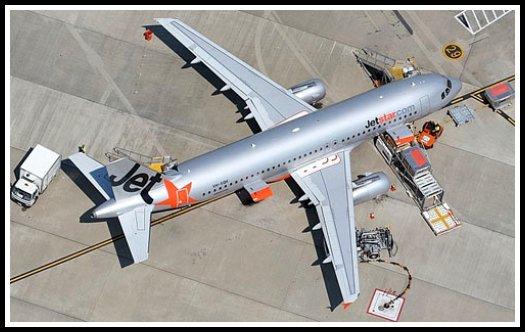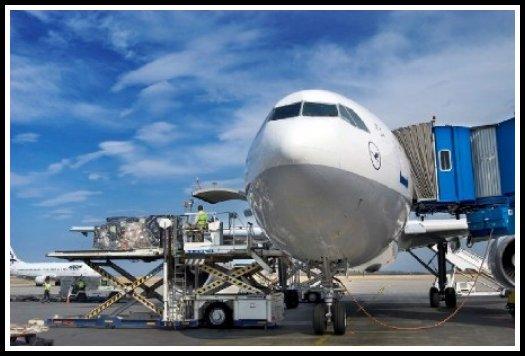Ground crew services and classification
The three worst things to hear in the cockpit : The Second Officer says, "Oh shit!" The First Officer says, "I have an idea!" The Captain say, "Hey, watch this!"
- Anonymous.

Ground handling vehicles disposition during handling of a Jetstar Airbus A320
In aviation, the ground crew is the support crew supplying the aircraft with fuel and maintenance, as opposed to the air crew. In airlines, ground crew members include:
- airframe and powerplant technicians
- avionics technicians
- baggage handlers
- rampers
- gate agents
- ticket agents
- passenger service agents (such as airline lounge employees)
- flight dispatchers
Some ground crew members are responsible for clearing the runway and gate area of any debris or garbage, in order to prevent foreign object damage by an object being sucked into an engine. The crew visually inspects the tarmac and removes any items found. This is typically called a "FOD Walk" and is done prior to aircraft arrival and after departure.
Most airports have ground crew handling the loading and unloading of passengers, crew, baggage, cargo, mail and to provide other services. Some ground crew are linked to a specific airlines operating at the airport. Many ground crew at the airport work in the vicinity of airplanes, therefore extreme caution should be exercised. Upon landing and reaching the apron, a tow tractor pulls the aircraft to one of the airbridges or aircraft is guided to a parking spot by a way of marshaling. An aircraft then has to be stabilized by way of placing chocks around an aircraft's landing gear. Ground power unit is then plugged in to supply the aircraft with the electricity (if the aircraft does not have APU, if APU is inop or crew wishes to use GPU rather than aircraft's own APU) because engines are not running, therefore they do not generate the electricity, as they do in flight. Upon cabin doors opening, passengers disembark the aircraft using the airbridge or passenger stairs. Upon disembarkation of passengers cleaning crew enters the aircraft and starts with interior cabin cleaning, if needed. Catering includes the unloading of unused food and drink from the aircraft, and the loading of fresh food and drinks for passengers and crew. If needed, aircraft lavatory drainage and potable water uplift will be provided using the toilet service vehicle and potable water vehicle. Aviation fuel is often dispensed from a tanker or a bowser, which is driven up to a parked aircraft. A tractor and its dollies bring the baggage/cargo/mail from the terminal/cargo warehouse to the aircraft. They also transport baggage to the terminal if the aircraft has landed, and was offloaded. Container loaders lift the heavy baggage containers in order to load them into the cargo hold through cargo hold doors. The ground crew push the baggage containers into the hold sectors according to the loading instruction - a document that is provided by a weight and balance agent/load control officer - presuming inbound flight's baggage have already been downloaded. After downloading, the baggage containers are pushed and locked on container dollies. Baggage belt loaders are used for narrow body aircraft and bulk hold of wide body aircraft. The loading of baggage that is stored without containers is also known as bulk loading. Passenger embarkation/boarding can begin any time from an hour to thirty minutes before departure (depending on the size of the plane and number of passengers). For boarding an aircraft, airstairs or passenger boarding stairs are used. Small aircraft may carry their own stairs. Upon passenger boarding completion cabin crew usually perform a head count in order to check the total number of passengers. In the meantime loadsheet and balance chart or the final pax/bag/cargo/mail figures are presented to the cockpit crew. Cabin doors and cargo hold doors can then be closed, aircraft servicing equipment removed from the aircraft and start-up can be performed. After chocks have been removed an aircraft can begin taxiing or can be pushed-back according to the ATC instructions.

Cargo loading with container-loader
UTC | Zulu Time
Copyright © 2012 Roger. All rights reserved. | Sitemap